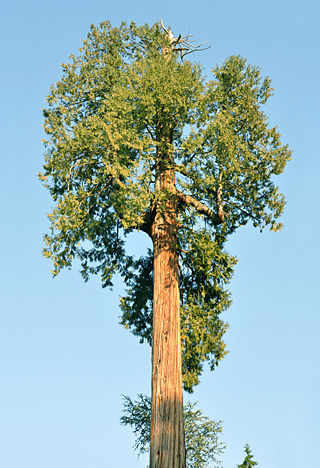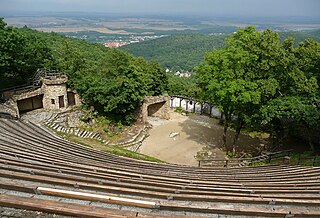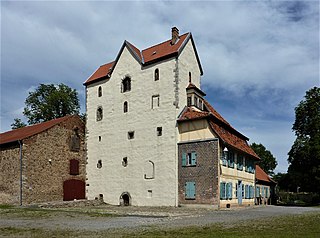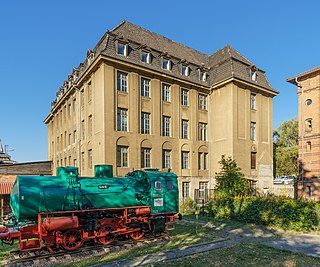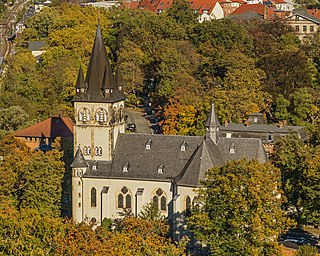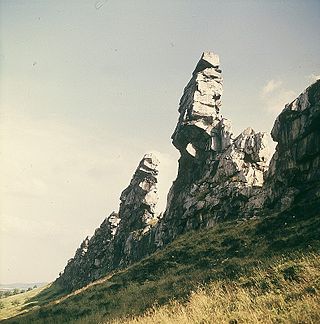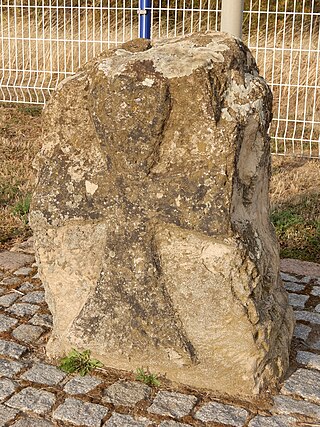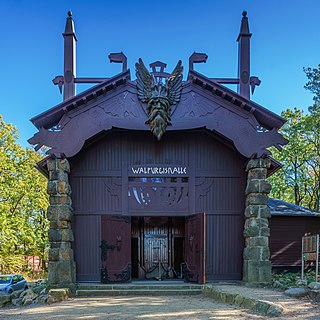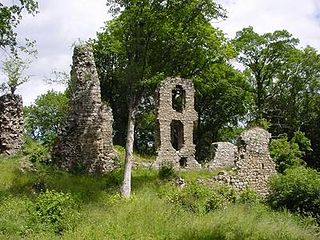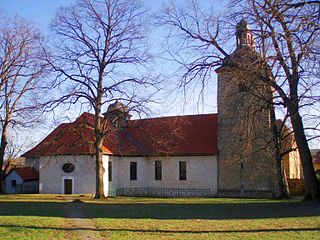11 Sights in Thale, Germany (with Map and Images)
Legend
Welcome to your journey through the most beautiful sights in Thale, Germany! Whether you want to discover the city's historical treasures or experience its modern highlights, you'll find everything your heart desires here. Be inspired by our selection and plan your unforgettable adventure in Thale. Dive into the diversity of this fascinating city and discover everything it has to offer.
Sightseeing Tours in Thale1. Amerikanischer Riesenlebensbaum
Thuja plicata is a large evergreen coniferous tree in the family Cupressaceae, native to the Pacific Northwest of North America. Its common name is western redcedar in the U.S. or western red cedar in the UK, and it is also called pacific red cedar, giant arborvitae, western arborvitae, just cedar, giant cedar, or shinglewood. It is not a true cedar of the genus Cedrus. T. plicata is the largest species in the genus Thuja, growing up to 70 metres (230 ft) tall and 7 m (23 ft) in diameter. It mostly grows in areas that experience a mild climate with plentiful rainfall, although it is sometimes present in drier areas on sites where water is available year-round, such as wet valley bottoms and mountain streamsides. The species is shade-tolerant and able to establish in forest understories and is thus considered a climax species. It is a very long-lived tree, with some specimens reaching ages of well over 1,000 years.
2. Harzer Bergtheater Thale
The Harzer Bergtheater Thale is an open-air theatre on the Hexentanzplatz in the Harz Mountains. It was founded in 1903 by Ernst Wachler, making it one of the oldest natural theatres in Germany. There are 1,350 seats on the semicircular benches. The theatre can be reached from Thale via a road and with the Bodetal cable car, which leads over the Bode Valley to the Hexentanzplatz.
3. Kloster Wendhusen
The Wendhusen Monastery, also modernized Wendhausen, in Thale is the oldest monastery in the territory of today's state of Saxony-Anhalt and is the start and end station of the Harz Monastery Hiking Trail. It is the only Carolingian building and the oldest canoness monastery in the new federal states. After secularization around 1540, it became a manor.
4. Hüttenmuseum
The Thale Ironworks Museum was founded in 1986 to mark the 300th anniversary of the Thale ironworks. Since 1 July 1998, the museum has been under the sponsorship of the Thale am Harz History and Metallurgical Museum Association. It shows the development of iron smelting and iron processing using the example of the Thalens factory from the sheet metal works in 1686 to the large-scale industrial enterprise of the 20th century.
5. Herz-Jesu-Kirche
The Sacred Heart Church is the Roman Catholic church in Thale, a town in the district of Harz in Saxony-Anhalt, Germany. It is listed as an architectural monument in the register of monuments of the state of Saxony-Anhalt under the registration number 094 45353. The church, named after the Sacred Heart of Jesus, belongs to the parish of "St. Mathilde" with its seat in Quedlinburg, in the deanery of Halberstadt of the Diocese of Magdeburg.
6. Teufelsmauer Königstein
The Teufelsmauer is a rock formation made of hard sandstones of the Upper Cretaceous in the northern part of the Harz Foreland in central Germany. This wall of rock runs from Blankenburg (Harz) via Weddersleben and Rieder to Ballenstedt. The most prominent individual rocks of the Teufelsmauer have their own names. The Teufelsmauer near Weddersleben is also called the Adlersklippen.
7. Warnstedter Mordkreuz
The Warnstedt Murder Cross is a cross stone on the country road from Timmenrode to Thale in Saxony-Anhalt. It commemorates the fatal injuries of Count Palatine Siegfried of the Rhine at this point, which were inflicted on him by supporters of Count Hoyer von Mansfeld in the Battle of Warnstedt on 21 February 1113. Siegfried died a little later on 9 March 1113.
8. Lauenburg
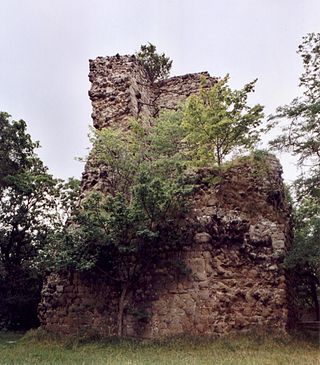
The Lauenburg is a ruined medieval castle in the East Harz in central Germany situated on an elevation southwest of the village of Stecklenberg in Harz district in the state of Saxony-Anhalt in the former German Democratic Republic.
9. Walpurgishalle
The Walpurgis Hall is a hall on the Witches' Dance Floor near Thale in the Harz mountains, Germany, built in the Old Germanic style by Hermann Hendrich and Bernhard Sehring. The hall was opened in 1901 and is a museum today. Whilst Sehring designed the architecture of the building to Hendrich's guidelines, Hendrich himself was responsible for the five large paintings in the interior of the hall. These portray scenes of the Walpurgis Night from Goethe's Faust known as the: Will-o'-the-Wisp Dance, Mammon's Cave, Witches' Dance, Bride of the Wind und Gretchen's Appearance.
10. Stecklenburg
The Stecklenburg is a ruined medieval castle in the East Harz in Germany, located on a small rise only a few hundred metres away from the village of Stecklenberg in the district of Harz in Saxony-Anhalt.
11. St. Stephani
St. Stephen's Church is a Protestant church in the Westerhausen district of the town of Thale in the district of Harz in Saxony-Anhalt, Germany. It belongs to the Protestant church district of Halberstadt and is located at Schulstraße 77.
Share
How likely are you to recommend us?
Disclaimer Please be aware of your surroundings and do not enter private property. We are not liable for any damages that occur during the tours.
